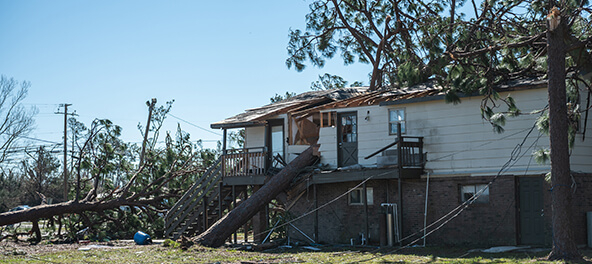Social determinants of health (SDOH) started becoming more mainstream of a concern for the greater healthcare system in 2018. An individual’s socioeconomic status can put their health at risk. Locally, this has become even more apparent since Hurricane Michael hit the panhandle last October. SDOH is defined by the Centers for Disease Control and Prevention as “conditions in the places where people live, learn, work, and play affect a wide range of health risks and outcomes.” These conditions can determine the health of people.
People have been living in unimaginable conditions since Hurricane Michael hit on October 10th, 2018. We are now in 2019, and many are still unable to live in their homes. Without proper housing and the many hazardous conditions around the panhandle that extend farther than just at home, there has been an increased rate of injury and illness. This hurricane has provided us with a prime example of social determinants impacting health.
The healthcare system has avoided addressing the issue of social determinants for a long time. In 2018, newly launched initiatives, as well as studies showing the need for these initiatives, have caused the healthcare system to take a new look at social determinants and how to address them.
Factors such as housing, transportation, food assistance, and personal finances have been taken into account to begin the process of reassessing healthcare’s take on social determinants. People with limited access to transportation and housing are at a higher risk of injury or illness, especially when they have limited ways to get to a physician. Medicaid plans on helping to offer affordable housing to those who need it. Patients without transportation often forego making an appointment or miss them when they do have them. Uber recently launched a “health dashboard” to provide free rides for those unable to get to a doctor when they need to.
In addition to this, Geisinger Health System started “Fresh Food Farmacy,” which cut costs among diabetic patients from anywhere between $48,000 to $240,000 per member. This caused the risk of serious complications or death for people with diabetes to drop to 40%, a great win for those working with diabetics. Cigna is also planning on offering financial planning services for their group members, as announced in December 2018. Financial stress can take a significant toll on a person’s physical and mental health.
With many physicians claiming social determinants “aren’t their problem,” there is still a long way to go with maintaining equity among Americans. However, now that the panhandle is experiencing even more of these social determinants than usual, we have been provided a new chance to tackle these determinants and make the panhandle a healthier place for everyone. These social determinants will continue to play a significant role in local health for everyone involved with the hurricane, but choosing to see the positive side of this great opportunity is best for our county’s health.
![]()
